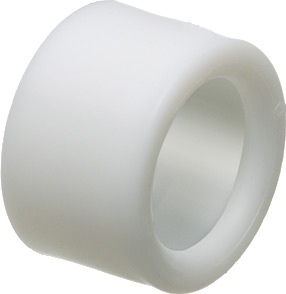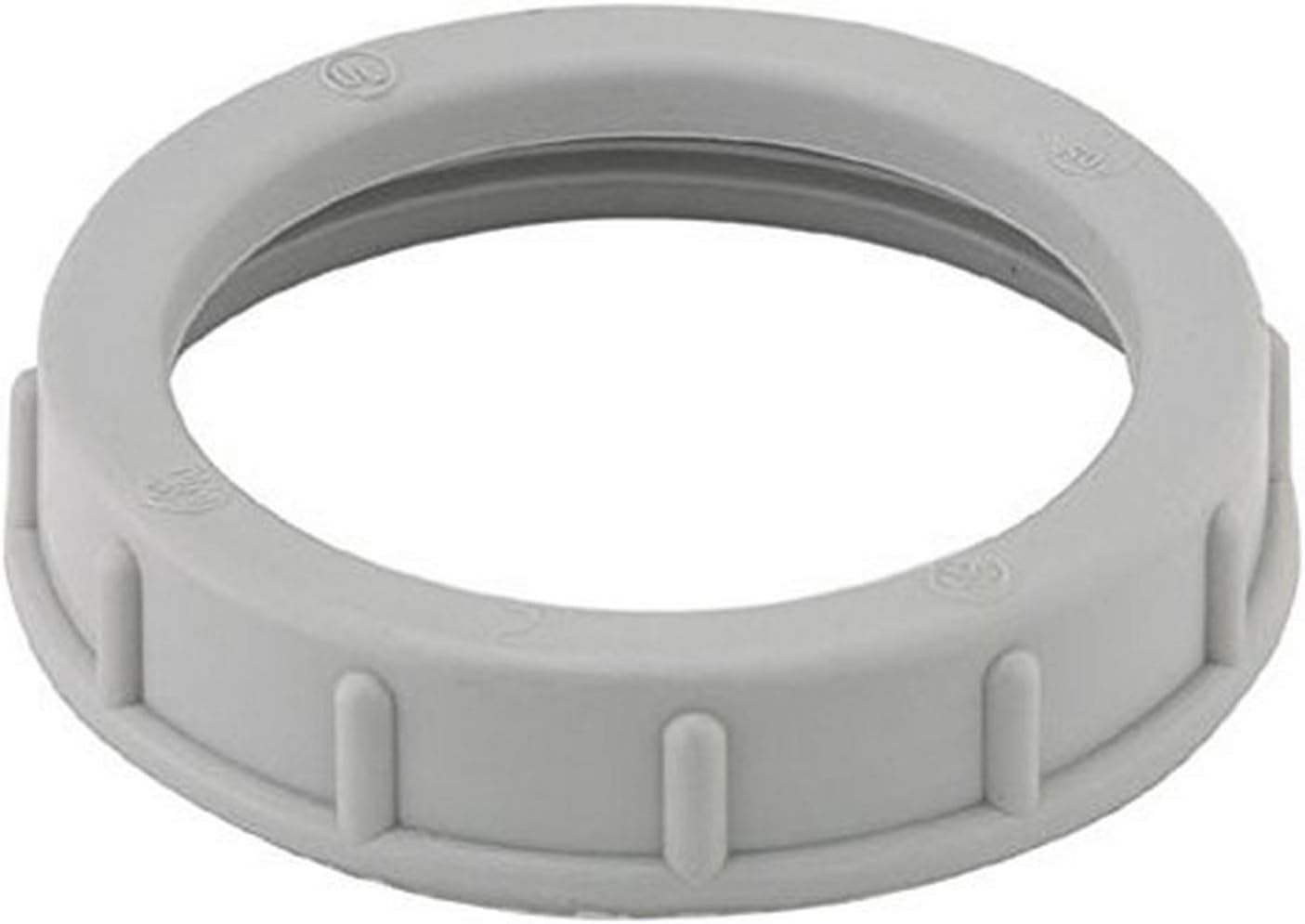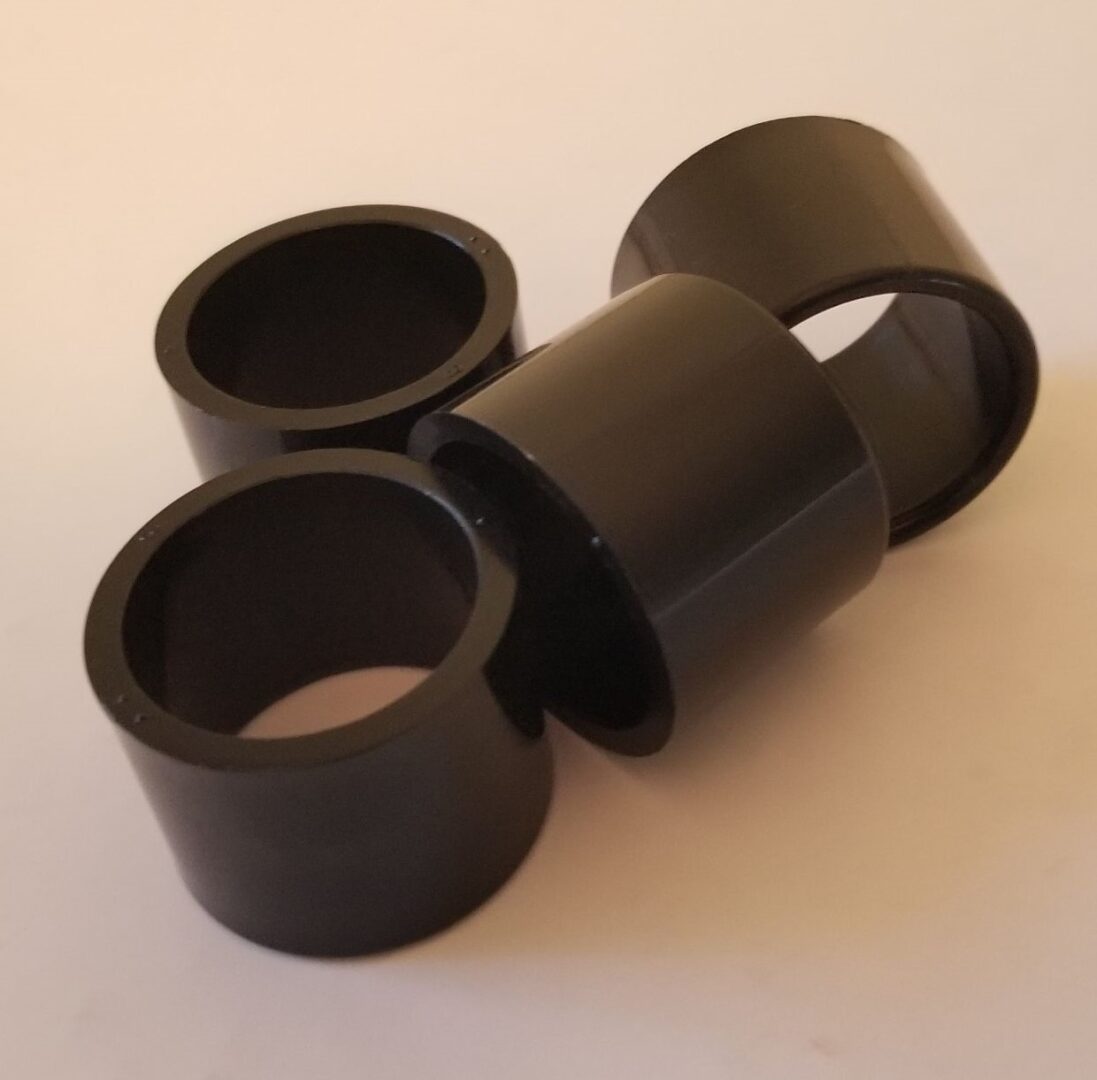
What are the environmental benefits of using plastic bushings, and how do they contribute to sustainability?
Plastic bushings offer several environmental benefits and contribute to sustainability in various ways. Here are some of the key advantages:
- Reduced Energy Consumption: Plastic bushings generally have lower friction coefficients compared to metal bushings, which results in reduced energy consumption. The lower friction allows for smoother operation and requires less power to overcome resistance, leading to energy savings. This can be particularly significant in applications with high-speed or continuous motion, where energy efficiency is crucial.
- Elimination of Lubrication: Many plastic bushings are self-lubricating or require minimal lubrication. Unlike metal bushings, which often require regular lubrication to maintain optimal performance, plastic bushings can operate effectively without the need for lubricants. This eliminates the need for oil or grease, reducing the consumption of lubrication products and minimizing the associated environmental impacts, such as oil spills or the disposal of used lubricants.
- Corrosion Resistance: Plastic bushings are generally resistant to corrosion, which can be a significant advantage in various environments. Unlike metal bushings, which may corrode and require frequent replacement, plastic bushings can withstand exposure to moisture, chemicals, and other corrosive substances. This extended service life reduces the frequency of bushing replacements, leading to less material waste and lower environmental impact.
- Weight Reduction: Plastic bushings are typically lighter than their metal counterparts, contributing to weight reduction in machinery and equipment. The use of lighter components can result in lower energy consumption during operation, especially in applications that involve frequent acceleration or deceleration. Additionally, reduced weight can lead to more efficient transportation and decreased fuel consumption during shipping.
- Recyclability: Many plastic bushing materials are recyclable, allowing for the recovery and reuse of the materials at the end of their service life. Plastic bushings made from recyclable materials can be collected, processed, and transformed into new products, reducing the demand for virgin materials and minimizing waste generation. Proper disposal and recycling practices contribute to a circular economy and the conservation of natural resources.
- Noise Reduction: Plastic bushings often exhibit superior damping properties compared to metal bushings, resulting in reduced noise and vibration levels. This can be advantageous in applications where noise reduction is important, such as in residential or office environments. By minimizing noise pollution, plastic bushings contribute to improved working conditions, increased comfort, and enhanced overall environmental quality.
By utilizing plastic bushings and benefiting from their environmental advantages, industries can contribute to sustainability efforts by reducing energy consumption, minimizing lubrication requirements, extending equipment lifespan, promoting recyclability, and improving overall operational efficiency. However, it is important to note that the sustainability of plastic bushings also depends on responsible manufacturing practices, proper disposal or recycling methods, and the selection of eco-friendly materials.

Where can I buy plastic bushings with self-lubricating properties for reduced maintenance needs?
If you are looking to purchase plastic bushings with self-lubricating properties to minimize maintenance requirements, there are several sources where you can find them. Here are some options to consider:
- Directly from Manufacturers: Many manufacturers specialize in producing plastic bushings with self-lubricating properties. Visiting the websites of reputable manufacturers is a good starting point. Look for manufacturers that offer self-lubricating plastic bushings as part of their product line. Their websites often provide detailed information about their products, including specifications, performance characteristics, and ordering details. You can usually find contact information or request a quote directly from the manufacturer’s website.
- Industrial Suppliers and Distributors: Industrial suppliers and distributors often carry a wide range of plastic bushings, including those with self-lubricating properties. These suppliers usually have catalogs or online platforms where you can search for and purchase the desired bushings. Some well-known industrial suppliers include Grainger, MSC Industrial Supply, and Motion Industries. Check their websites or contact them to inquire about the availability of self-lubricating plastic bushings.
- Online Marketplaces: Online marketplaces can be a convenient option for purchasing plastic bushings with self-lubricating properties. Websites such as Amazon, eBay, or Alibaba have a vast selection of industrial components, including self-lubricating plastic bushings. When using online marketplaces, it is important to verify the seller’s reputation and reviews to ensure the quality and authenticity of the products being offered.
- Local Industrial Supply Stores: Check if there are any local industrial supply stores or specialty bearing stores in your area. These stores often carry a variety of plastic bushings and can provide guidance on selecting the right self-lubricating bushings for your specific application. Visiting a local store allows you to physically examine the products and seek advice from knowledgeable staff before making a purchase.
- Trade Shows and Exhibitions: Trade shows and exhibitions focused on industrial components and machinery are excellent venues to explore and source self-lubricating plastic bushings. These events bring together manufacturers, suppliers, and industry professionals, providing an opportunity to see and compare different products in person. Attend relevant trade shows or exhibitions in your region to connect with suppliers and learn about the latest advancements in self-lubricating bushing technology.
When purchasing plastic bushings with self-lubricating properties, consider factors such as the specific requirements of your application, the expected loads and operating conditions, and the compatibility with the mating surfaces. Additionally, ensure that the chosen supplier or manufacturer has a reputation for delivering high-quality products and reliable customer service.
By exploring these sources and considering the factors mentioned above, you can find reputable suppliers of plastic bushings with self-lubricating properties, enabling you to reduce maintenance needs and enhance the performance and longevity of your machinery or equipment.

What are the key considerations when selecting plastic bushings for corrosive environments?
When selecting plastic bushings for corrosive environments, it’s essential to consider several key factors to ensure the longevity and performance of the bushings. Corrosive environments can pose significant challenges to materials, including degradation, chemical attack, and loss of mechanical properties. Here are the key considerations when selecting plastic bushings for corrosive environments:
- Chemical Compatibility: The first and foremost consideration is the chemical compatibility of the plastic material with the corrosive substances present in the environment. Different plastics have varying degrees of resistance to specific chemicals. It’s crucial to identify the types of corrosive chemicals, acids, bases, solvents, or other substances that the bushings will be exposed to and choose a plastic material that offers excellent resistance to those specific chemicals.
- Material Selection: Certain plastic materials are known for their superior chemical resistance properties. For corrosive environments, consider using plastic materials such as PTFE (Polytetrafluoroethylene), PVDF (Polyvinylidene Fluoride), PPS (Polyphenylene Sulfide), or ETFE (Ethylene Tetrafluoroethylene). These materials offer excellent resistance to a wide range of corrosive chemicals and can withstand harsh environments.
- Temperature Range: In addition to chemical compatibility, consider the temperature range of the corrosive environment. Some plastics may have temperature limitations and can degrade or lose their chemical resistance properties at elevated temperatures. Ensure that the selected plastic material can withstand the temperature range of the corrosive environment without compromising its performance or chemical resistance.
- Load and Wear Requirements: Evaluate the load and wear requirements of the application. Corrosive environments may involve abrasive particles or high loads that can accelerate wear and reduce the lifespan of the bushings. Select plastic materials that offer excellent wear resistance and can withstand the specific load conditions of the application.
- Sealing and Contamination: Corrosive environments often involve the presence of moisture, gases, or contaminants. Consider whether the bushings need to provide sealing properties to prevent ingress of corrosive substances or contamination. Some plastic bushings can be designed with additional sealing features to enhance protection against corrosive elements.
- UV and Weather Resistance: If the corrosive environment involves exposure to sunlight or outdoor weather conditions, consider the UV resistance and weatherability of the plastic material. Some plastics may degrade or experience color fading when exposed to prolonged sunlight or extreme weather conditions. Choose a plastic material that offers good UV resistance and weather resistance properties if applicable.
- Manufacturer Expertise: Work closely with manufacturers or suppliers who have expertise in providing plastic bushings for corrosive environments. They can offer guidance on material selection, design considerations, and provide specific recommendations based on their experience and knowledge of different plastic materials and their performance in corrosive environments.
It’s important to thoroughly assess the corrosive environment and consult with experts to ensure the right plastic material is selected for the bushings. Conduct compatibility tests, review material datasheets, and consider real-world application experiences to make an informed decision. Additionally, proper installation, regular inspection, and maintenance practices should be followed to maximize the performance and lifespan of the plastic bushings in corrosive environments.
By considering these key factors, you can select plastic bushings that are well-suited for corrosive environments, providing reliable and long-lasting performance even in the presence of corrosive substances.


editor by CX 2024-04-24